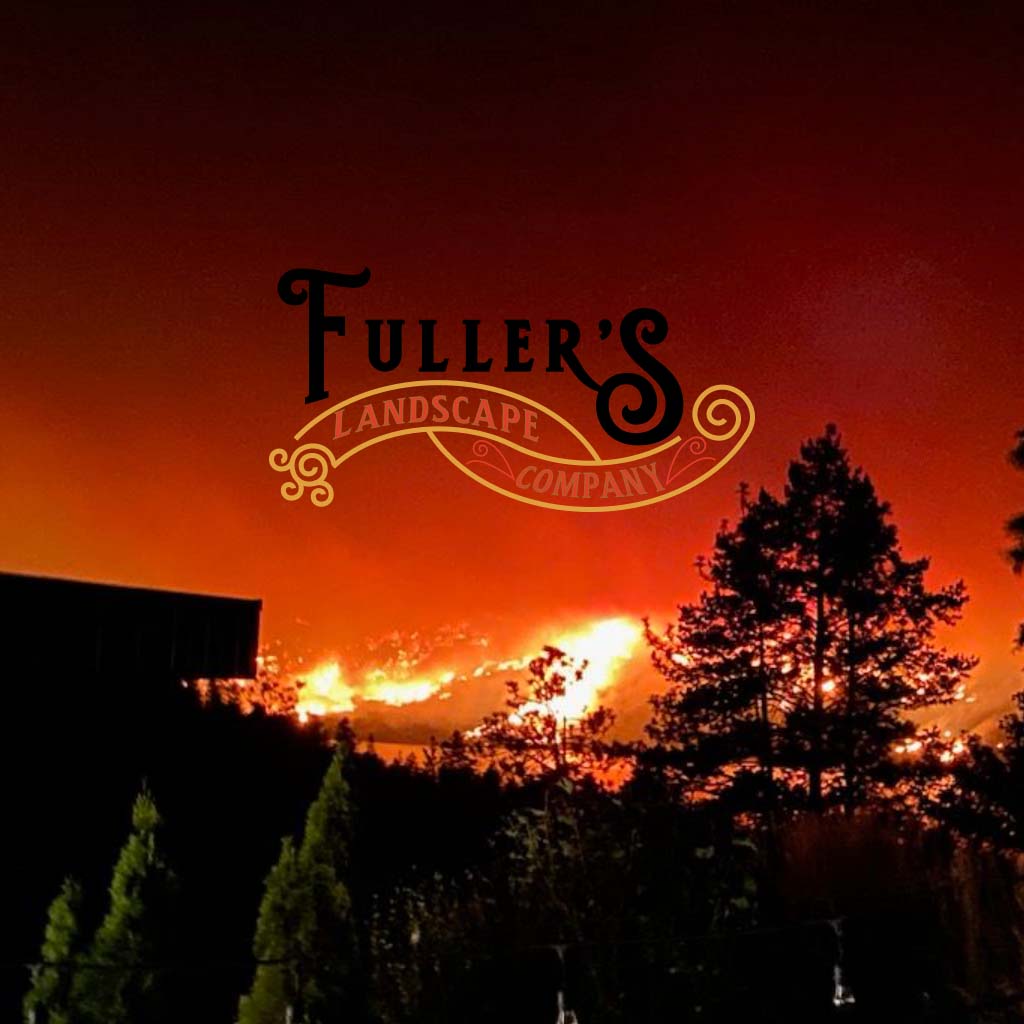 Landscaping after a wildfire is a crucial step in the recovery process to restore the natural beauty and functionality of your property. Fuller’s was devastated by the wildfires in West Kelowna and Kelowna in late August 2023. We want to help put our communities back together and are available to hire for landscaping projects in fire-ravaged neighbourhoods as early as spring 2024. If you need help with an insurance report, or estimate or you have other questions related to landscaping after a fire, please reach out to us. A guide on how to get started can be found below.
Landscaping after a wildfire is a crucial step in the recovery process to restore the natural beauty and functionality of your property. Fuller’s was devastated by the wildfires in West Kelowna and Kelowna in late August 2023. We want to help put our communities back together and are available to hire for landscaping projects in fire-ravaged neighbourhoods as early as spring 2024. If you need help with an insurance report, or estimate or you have other questions related to landscaping after a fire, please reach out to us. A guide on how to get started can be found below.
There are several important factors to consider, before embarking on post-wildfire landscaping:
Safety First
Ensure that the area is safe for access and that there are no immediate hazards, such as unstable slopes, dead trees, or smoldering embers. Consult with local authorities and emergency services to obtain clearance and assess potential dangers.
Read more about safely getting your post-wildfire landscaping project off the ground here.
Assess the Damage
Evaluate the extent of the wildfire’s damage to your property, including damage to structures, vegetation, and soil. This assessment will help you make informed decisions about the scope of your landscaping project.
Read more about getting an assessment for your property after a wildfire here.
Erosion Control
Wildfires can destroy vegetation and disrupt soil stability, making the area susceptible to erosion. Implement erosion control measures, such as installing silt fences, mulching, or planting cover crops, to prevent soil loss. You may also need an assessment completed for any retaining walls on the property.
Read more about getting an assessment on erosion damage and control here.
Soil Testing
Conduct soil tests to determine the condition of your soil. Wildfires can alter the soil’s composition and pH levels. Based on the results, you may need to amend the soil with organic matter or lime to improve fertility and structure.
Native Plants
Consider planting native vegetation that is adapted to the local climate and can better withstand future wildfires. Native plants often require less water and maintenance, making them a sustainable choice.
Fire-Resistant Landscaping
Design your landscape with fire-resistant principles in mind. This includes creating defensible spaces by keeping a safe distance between structures and flammable vegetation, pruning trees and shrubs, and using fire-resistant materials for hardscaping features.
Water Management
Plan for efficient water management. Consider using irrigation systems to establish and maintain new plantings. Drip irrigation or soaker hoses are efficient ways to deliver water directly to the root zone.
Mulching
Apply mulch to the soil to retain moisture, suppress weeds, and protect the soil from erosion. Use non-flammable mulch materials to reduce fire risk.
Tree Selection and Placement
Choose fire-resistant tree species and plant them strategically to provide shade and windbreaks while minimizing fire risk. Maintain proper spacing between trees to prevent crown fires.
Maintenance
Establish a maintenance plan for your landscaped area. Regularly remove dead vegetation, thin out overgrown areas, and keep an eye on any invasive species that may impede the recovery process.
Local Regulations
Check with local authorities and fire departments for any regulations or guidelines related to landscaping after wildfires. They may have specific requirements for fire safety and land use.
Wildlife Habitat:
If your property is in a wildlife habitat, consider how your landscaping choices can support local wildlife. Incorporate features like birdhouses, native plants that provide food and shelter, and wildlife-friendly water sources.
Budget and Resources:
Develop a budget for your landscaping project, taking into account the cost of plants, materials, equipment, and labor. Seek funding assistance or grants that may be available for post-wildfire recovery efforts.
Professional Assistance:
Remember that recovery after a wildfire can be a long-term process. Be patient and flexible, as nature will gradually reclaim the area. It’s essential to work with the local ecosystem and prioritize safety to create a resilient and beautiful landscape. Contact Fuller’s Landscaping today to receive a free estimate on fire recovery landscaping in West Kelowna and Kelowna.
